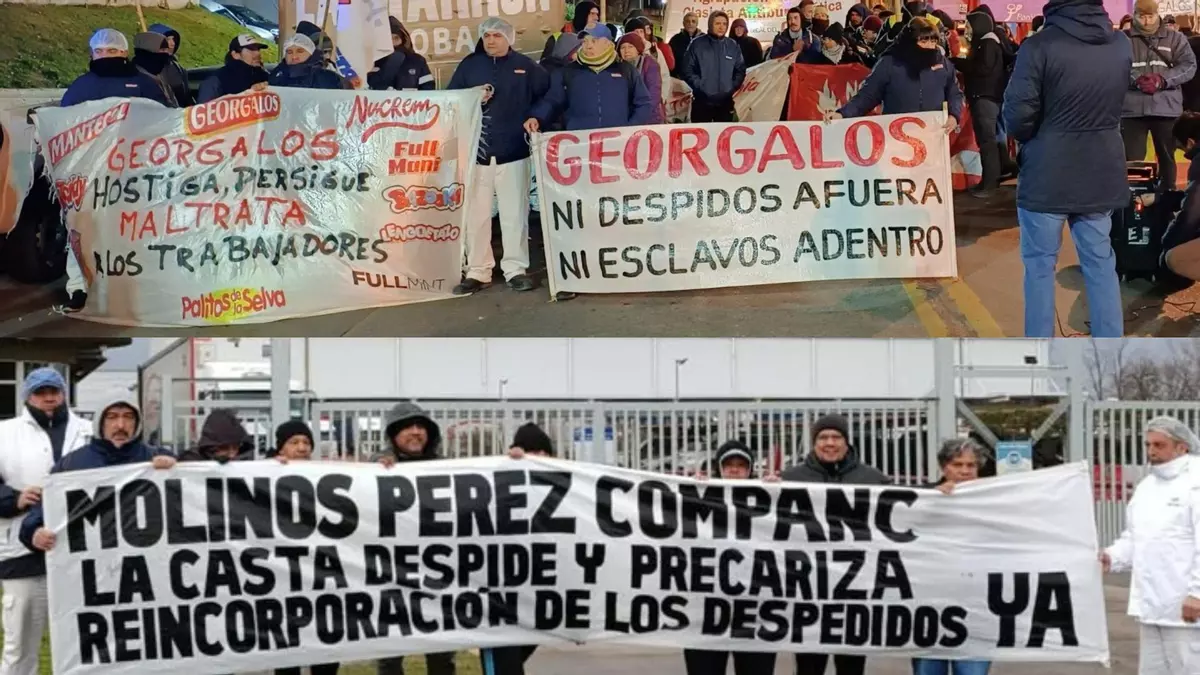
After the electoral victory, Milei rushes his labor reform project through Congress. It implies a removal of labor rights for workers for the benefit of employers. From an increase in working hours, greater flexibility, the end of collective agreements by branches, to the end of compensation for dismissals without cause.
The usual argument is to “modernize labor relations” to allow job creation. But in the 90s they already used the same excuse and it was a decade that left an increase in unemployment and job insecurity.
Since then, a level of job insecurity was maintained from which subsequent political projects were mounted, which maintained the structural modifications of the Menemist labor market.
Currently, for the second quarter of the year, more than 50% of workers were informal or self-employed. A workforce of more than 11.4 million people who are without the rights of registered workers. The latter represent 49% of total jobs, when in the same period of 2016 it was 53%.
The Workers’ Observatory of La Izquierda Diario, carried out a “Precariousness Index” taking as reference three central dimensions: Income, Working Hours and Hiring Conditions. From these, the report concludes that “more than 75% of workers suffer some type of job insecurity; while 50% of the workforce combines two or three conditions of job insecurity.”
The end of compensation: What is the Termination Fund?
With the approval of the Bases Law (with the votes of the opposition with a wig), the possibility of forming, via collective labor agreements, of severance funds to replace severance payments was enabled. Something similar to what already exists in the construction industry with the endorsement of the UOCRA union, led by Gerardo Martinez since 1990.
When consulted by La Izquierda Diario, labor specialist Luis Campos explained that this initiative of the Termination Fund implies “basically transforming the dismissal compensation regime into a financial business, removing any protective nature which is what the constitution provides for in article 14 bis.”
According to Campos, “there have not yet been collective agreements that include this type of negotiations, severance funds to replace severance pay, but it is something that is enabled.”
The scam of the banks and insurance companies with the efforts of the workers
In June of this year, the National Securities Commission (CNV) approved General Resolution No. 1071, which created the “Special Regime for Collective Investment Products for Labor Termination.”
It indicates that the Severance Fund System will be established “through the Collective Bargaining Agreement and must be administered through Open Common Investment Funds (“FCI”) or Financial Trusts (“FF”)”.
With these instruments, the employer can make monthly contributions equivalent to a percentage of the worker’s salary (an estimated 8%). Although, according to Campos, “the law does not establish any minimum guarantee for the worker and even opens the door so that contributions can also come from the workers’ salaries.”
When a worker is terminated, the amount to be paid will depend on the results of these investments, so the financial risk is transferred to the workers. For example, if there is a financial crash or collapse (somewhat common in our country), the investment amounts can disappear. The Law does not even establish the guarantee that in no case will workers receive a sum less than what they are entitled to by article 245 of the Employment Contract Law: compensation for dismissal without cause.
Under the direction of Federico Sturzenegger, a potential financial business was established for banks, insurance companies and ART. A rehash of the AFJP system: charging workers to manage their money, without even sharing the risk of the destination of the investments.
Level down or gain rights? The evidence in the UOCRA case and the Left’s proposal to reduce the working day
Something similar to the Labor Termination Fund works in the Construction Industry Labor Agreement signed by the UOCRA. Gerardo Martínez has led the union there since 1990, who is also the representative of the CGT before the May Pact, convened by the Government to advance the reforms.
But the example of the UOCRA is illustrative, since it is one of the unions where precariousness advanced the most and the fewest blank jobs were generated. This was demonstrated by Luis Campos on the social network X.
“If severance pay is replaced by a severance fund, employers will have incentives to hire new workers”
In construction there has been a severance fund for decades, and registered employment is at the lowest levels of the last 20 years pic.twitter.com/AR141q6Bz2— Luis Campos (@luiscampos76) November 3, 2025
The change of compensation for “insurance”, in addition to a large cash flow for the financial negotiations of insurers and banks, implies an ease for employers to fire those workers with greater seniority or higher salaries. Which will imply an increase in unemployment under a Government that has already destroyed more than 250 thousand formal workers since it took office, according to the CEPA center.
Faced with this perspective of labor reform and structural impoverishment, the Left Front proposes a measure to gain rights by attacking the profits of the big capitalists who fire, precarious, evade and flee. The FIT proposes reducing the working day to 6 hours and 5 days a week without salary reduction, with a minimum wage equivalent to the family basket and the distribution of working hours between employed and unemployed.
The proposal of the left is related to continuing to fight for employment with full rights, against job insecurity, and that no one earns less than what the family basket costs.
If the reduction in working hours were applied to the 12,000 large companies, one million jobs could be created in these firms in the country.
It is possible to carry out this proposal with the broad mobilization of the working class to face the resistance of the large employers who will oppose a measure that affects their profits, and with the perspective of the reorganization of production articulated not according to private profit but rather according to the needs of the social group.
Source: www.laizquierdadiario.com

